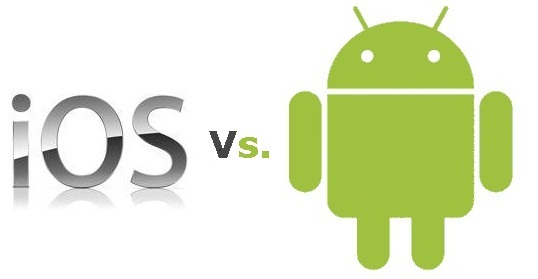
This morning at the WWDC 2011 conference, Apple announced the new (and much rumoured) iOS5, including a swathe of new features.
However, we have seen a lot of these before, and thought we’d break them down for you just to see how iOS5 stacks up against Android. We used The Unofficial Apple Weblog’s summary of iOS5’s new features for this comparison.
While iOS5 undoubtedly has some cool new features, Android is still (feature-wise) streets ahead. Please bear in mind though that this is just an opinion piece – it doesn’t necessarily reflect the views of everyone. I’ve tried to present a balanced view here – in some aspects, iOS5 may just be better.
You’ll note that in comparisons for Mail, we haven’t identified either platform as being better. iOS5 has some cool enterprise integration features, while Android has (and has had for awhile) a lot of the features new to iOS such as full text search. Which platform offers the better features will depend on what you need.
Read on for the comparison table.
| iOS 5 | Android | |
|---|---|---|
| Notifications | Brings Android-style notifications to the iOS platform. No longer will you be interrupted by giant notification boxes – you’ll receive notifications across the top of the screen. You can select notifications, or clear all.
Truly revolutionary… |
… except that Android notifications have been done this way for a long, long time. |
| NewsStand | A single place to read all your news and magazine subscriptions. New editions are automatically downloaded to your device.
While it might be a gimmicky feature, it’s nifty if you use it. |
No system-level equivalent, but this (to this one author, at least) seems like a fairly gimmicky tool, given the high prices for these subscriptions when free content is just as easily available elsewhere. |
| Twitter is now integrated into iOS. A single signon is implemented so you don’t need to sign in to each app. You can upload photos to Twitter in a few clicks. Location and thumbnails are also available to Twitter. Twitter syncs with your contacts. | Something that Twitter clients on Android have provided from the get go – image sharing, integration into system photo management, and contact syncing is also available (and has been for quite awhile…) | |
| Safari | Tabbed browsing on the iPad, and it offers a feature where article-type pages are zoomed to remove advertising content. | Android has had tabbed browsing for awhile, and offers variety of web browsers with different implementations to suit your tastes. |
| Reminders | System-level to-do app, triggered by time or location. Pretty cool. | I don’t think that Android offers an equivalent – especially location based triggering – but it probably will soon. |
| Camera | You can activate the camera from the lock screen. You can use hardware buttons to trigger a photo capture, and pinch to zoom is available. Built in photo editor with basic features. | Hardware buttons to take photos are nothing new, pinch to zoom isn’t either… and a photo editor? Depending on the manufacturer, most Android handsets include a photo editor now and have done for a little while. |
| Full text searching, rich text editing, and flagging. A dictionary feature is now integrated, and S/Mime support available for enterprise. | Full text search is not new to Android – I mean come on, it’s made by Google, it’s going to have search. We don’t yet have rich-text editing for Gmail/Email on Android – though third party apps support this. No decent S/Mime integration on Android yet. | |
| PC Free | Setup and activate your iDevice without a computer. Updates over the air, and you can add/edit mailboxes and calendars on the iDevice. | Android has always had these abilities. |
| Game Center | Better profile support, and support for more game types. A central place to share info about your games.. if you’re a gamer, this is pretty neat. | Android doesn’t have a game-centre like service. |
| iMessage | A new messaging service for iOS owners – its like an SMS replacement / Blackberry Messenger type service which can share text, photos, videos, group messaging etc.
The curious thing is that pre iOS5, iPhone users have had a very limited ability to share rich media with each other.. heck, iOS didn’t have MMS in its earlier versions, and even then, it’s not feature-rich. |
Android doesn’t have a standard service like this, however (just as with iOS pre iOS5) there are a variety of third party apps which enable precisely these features, and you can choose one that best meets your needs.
Or you can just use SMS/MMS/Email, which allows you to share all these things without being tied to a particular platform. |
| Update process | iPhone updates are released once Apple has completed testing – these updates do not typically require carrier approval before they are released.
This means that once Apple releases an update, it’s available to all iOS users regardless of carrier. |
The update experience in Australia has been a mixed bag, with some carriers pushing updates through quickly, and some holding them up for testing before they are released.
However, the flip side of this is that unofficial software updates are frequently available, so if you’re not prepared to wait for your carrier to release an update, you can often get it somewhere else. However, iOS update process is (generally) quicker. |
So, how do you compare these features? Are iOS’ new features important to you? Will they have you jumping ship for an iPhone?
Tell us how these features compare in the comments!




